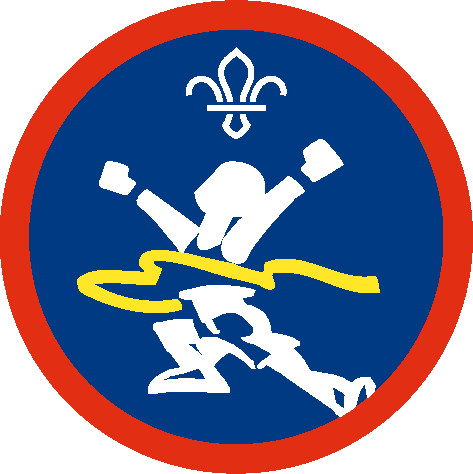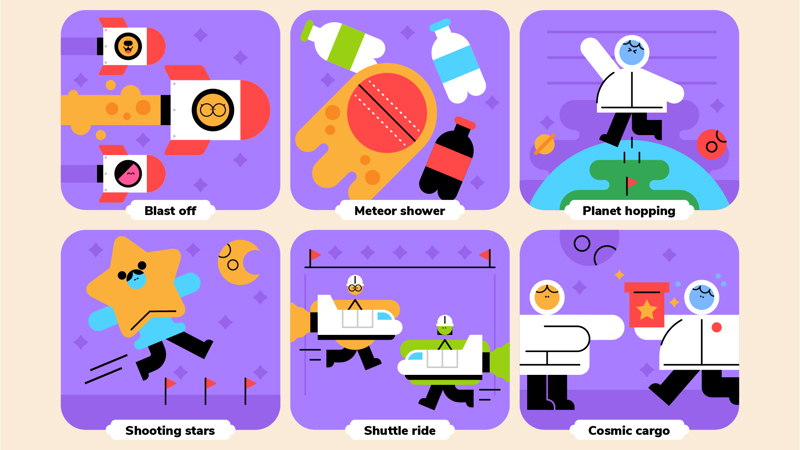
Cosmic quest
You’ll need
- Masking tape
- Chairs
- Clean, empty plastic bottles (two litres)
- Chalk
- Stopwatch or phone
- Crash mats
- Cricket balls
- Star stickers or tokens
Before you begin
- Use the safety checklist to help you plan and risk assess your activity. Additional help to carry out your risk assessment, including examples can be found here. Don’t forget to make sure all young people and adults involved in the activity know how to take part safely.
- Make sure you’ll have enough adult helpers. You may need some parents and carers to help if you’re short on helpers.
Setting up for this activity
- At a meeting before you do this activity, make sure everyone knows what they need to do to arrive ready for athletics. They’ll need to wear the right clothes that let them move freely, and comfortable shoes.
- Decide whether you’ll do these activities indoors or outside. If you have the space, you could run the activities as bases, moving from one to the next.
- You may want to mark out any lines or prepare any items for each of the six games before everyone arrives, to help the activity run smoothly. Alternatively, players could help set up each game before they play.
- You may want to keep track of the stars or tokens each player has collected on a sheet of paper, in case they forget which ones came from which game.
Prepare for take off
- Everyone should get into a space. The person leading the game should explain that warming up is important because it starts to raise everyone’s heartbeat, and gets their muscles ready to stretch.
- The person leading the game should lead everyone through some basic warm up exercises.
- If anyone has any ideas for more ways to warm up, they should take it in turns to lead the rest of the group.

Game one: blast off
- Mark a start line and a finish line that are 50 metres apart.
- Stand by the finish line with the stopwatch.
- Everyone should line up on the start line. When the person leading the game says go (and starts the stopwatch), everyone should run to the finish line as fast as they can to blast off into space.
- Depending on how much space you have, you may need people to run just a few at a time.
- The player leading the game should say ‘three stars’ when the time reaches 9 seconds, ‘two stars’ when it reaches 10 seconds, and ‘one star’ when it reaches 11 seconds. Anyone who blasts off (reaches the finishes line) in fewer than 9 seconds should get an extra star for each second.
- You can also time people individually – but it might be easier to call out the stars and for everyone to remember how many they got (with the help of others).
- The person leading the game should give everyone any stars or tokens they’ve earned.
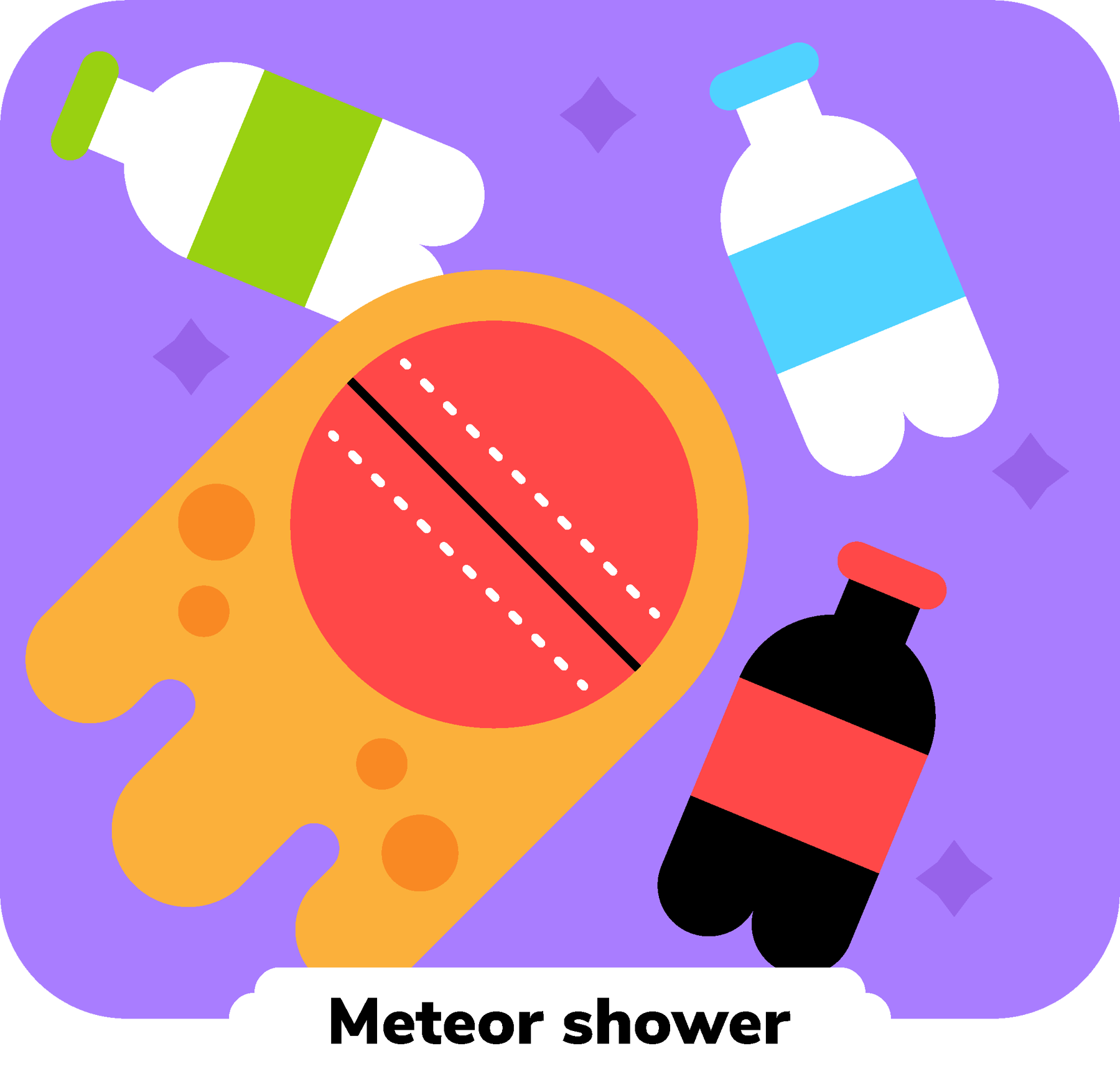
Game two: meteor shower
- Mark a throw line, and set up three chairs. One should be 18 metres away, one 22 metres away, and one 25 metres away. They should place a plastic bottle on each chair.
- Everyone should take it in turns to throw a cricket ball at each of the plastic bottles. Each player should have three turns at hitting each target.
- It doesn’t matter if the players hit the plastic bottle (or even the chair), as long as the ball travels the same distance without bouncing or rolling. It’s about how far the meteor travels, not about how accurate it is.
- The person leading the game should give everyone any star token they’ve earned. If their best throw reached the furthest target, they get three stars. If their best throw reached the middle target, they get two stars. If their best throw reached the first target, the get one star.
- No one should get more than three stars or tokens.

Game three: planet hopping
- Everyone should stand against a wall that can be marked with chalk. If no walls can be marked with chalk, stick big pieces of paper to the wall, so you can mark them with a pencil.
- Everyone should line up against the wall, and reach up with one arm.
- Mark where the top of everyone’s fingers reach.
- Everyone should jump – they should bend their legs, keep their arm up against the wall, and jump as high as they can.
- Again, mark where everyone’s fingers reach. People might need to jump a few at a time – anyone can help measure where everyone reaches, it doesn’t have to just be one person in charge.
- Measure the distance between the two lines – this shows how high everyone has jumped.
- Give everyone any stars or tokens they’ve earned. If they manage to jump 35cm, they get three stars or tokens. If they jump 30cm, they get two stars or tokens. If they jump 25cm, they get one stars or tokens.
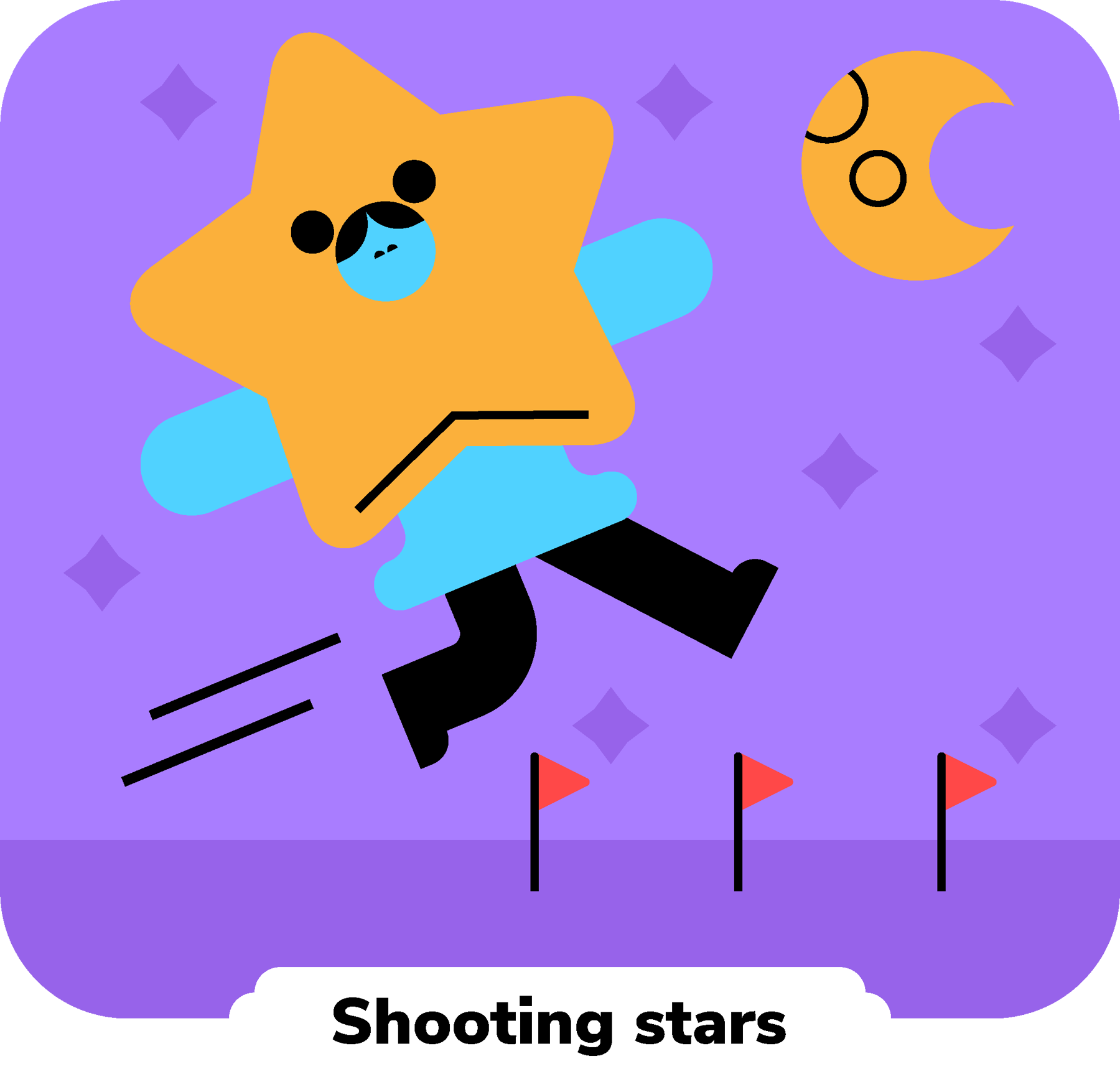
Game four: shooting stars
- Mark a start line. They should set out crash mats, to cushion everyone’s landings.
- Put three stars or tokens three metres away from the start line, two stars two and a half metres from the start line, and one star two metres from the start line.
- Everyone should take it in turns to run up to the start line, and jump as far as they can to reach the stars.
- Each person should collect any stars they reach. The person leading the game should replace the stars or tokens, ready for the next player.
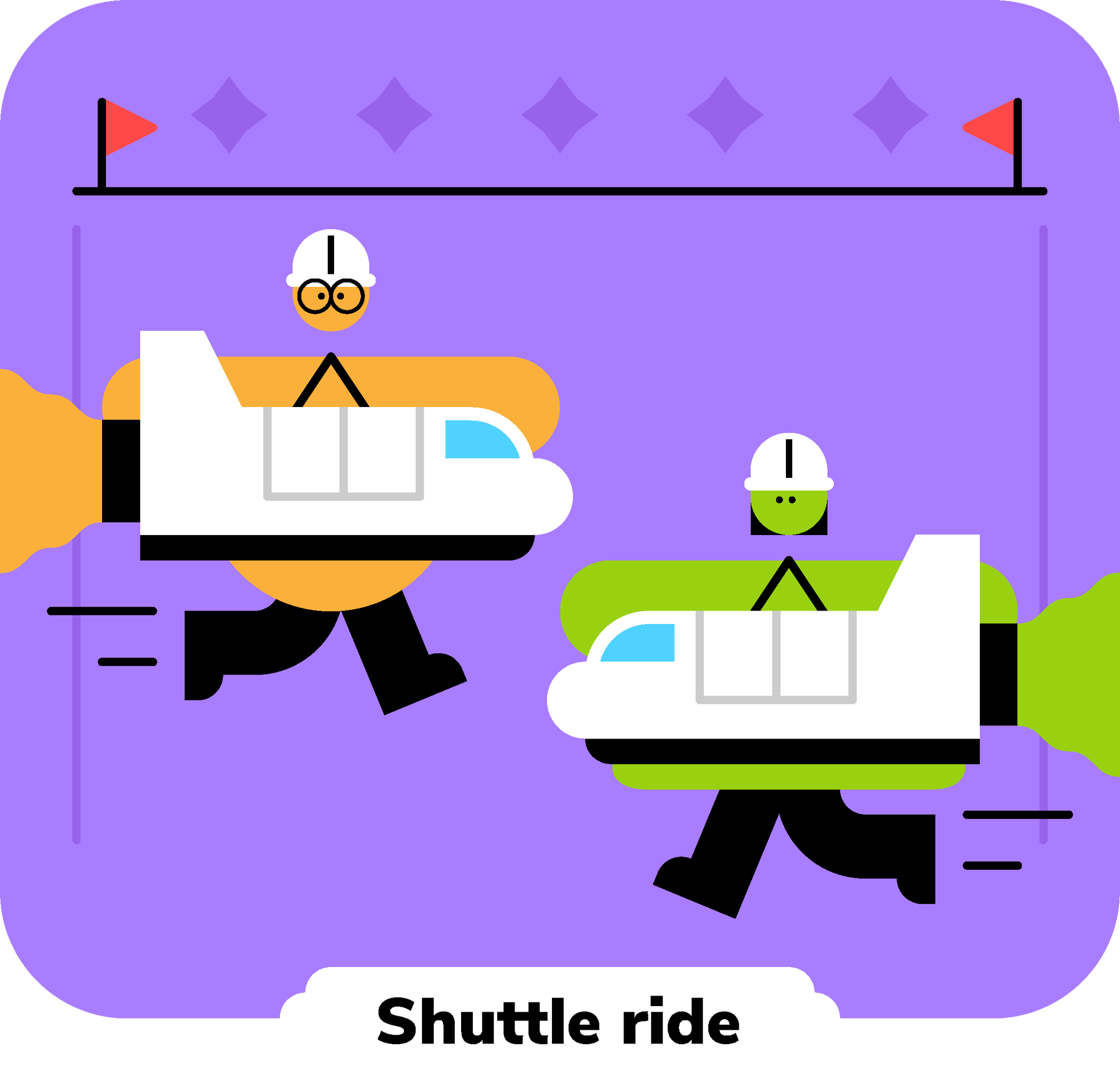
Game five: shuttle ride
- Make a start line and a line 10 metres away.
- Everyone should stand by the start line. When the person leading the game says go (and starts the stopwatch), players should start running to the other line and back again. In total, they should run six times.
- The player leading the game should say ‘three stars’ when the time reaches 18 seconds, ‘two stars’ when it reaches 19 seconds, and ‘one star’ when it reaches 20 seconds. Anyone who blasts off in fewer than 18 seconds should get an extra star for each second.
- You can also time people individually – but it might be easier to call out the stars and for everyone to remember how many they got (with the help of others).
- Give everyone any stars or tokens they’ve earned.
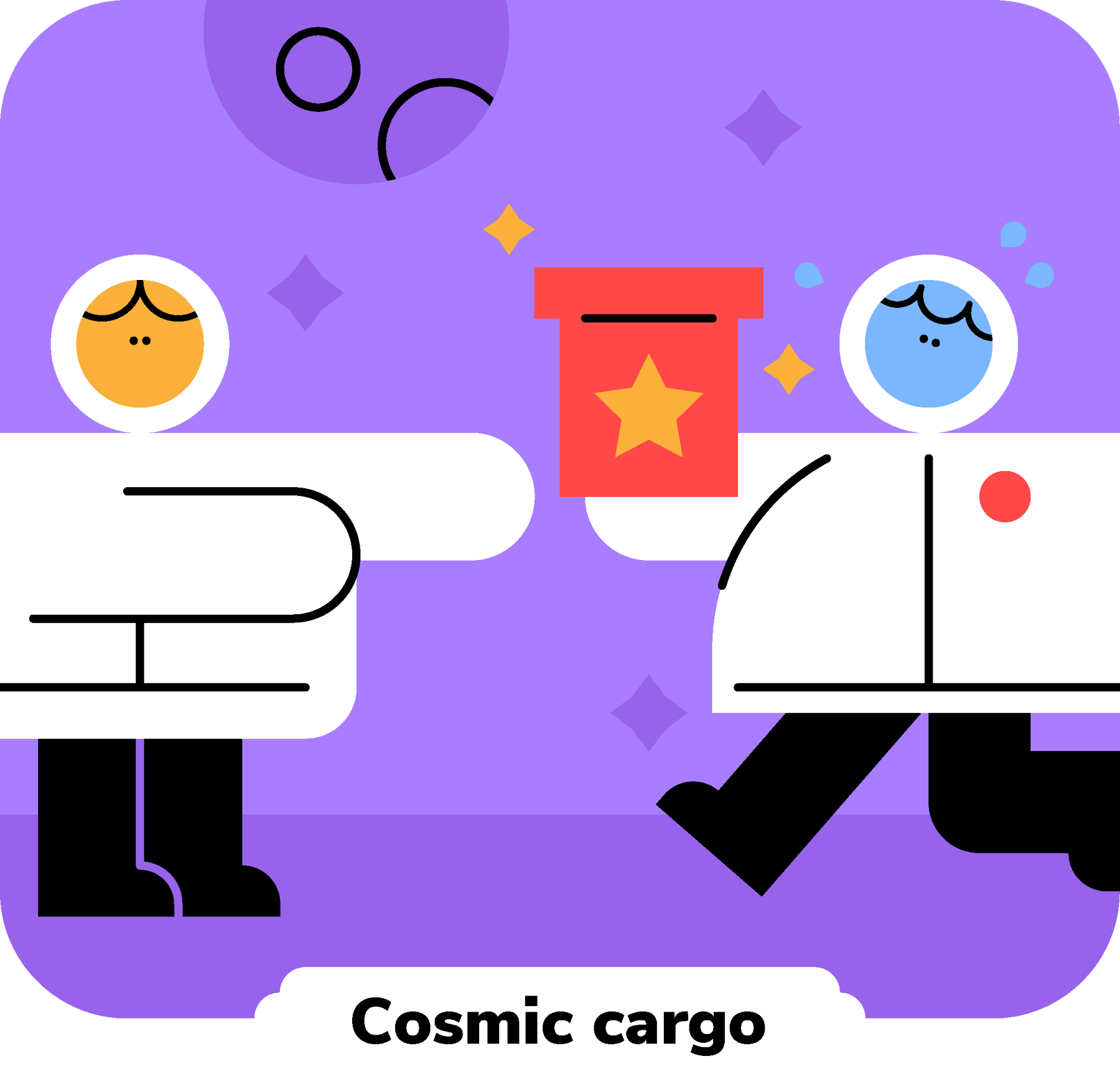
Game six: cosmic cargo
- Mark a start line, and another line 100m away.
- Split into teams of four players. You could do this by giving people the names of famous astronauts or missions, such as Neil Armstrong, Mae C Jemison, Tim Peake, Challenger or Apollo. Ask everyone to find the others with that name.
- Two players should stand at the start line, and two players should stand at the other line.
- Give the first person in each team a small box with 12 stars in. The box should be small enough for players to hold it in one hand.
- When the person leading the game says go (and starts the stopwatch), the first player should run from their line to the other line, and pass the box of stars to the player waiting there.
- Each player should run the 100m distance between the lines, passing the box of stars to the player waiting. Everyone should run once.
- Stop the stopwatch once the last player in the team finishes running.
- Give everyone any stars or tokens they’ve earned.
Count the stars
- Everyone should count up the stars or tokens from their best four activities.
- The person leading the game should give out any other awards for anyone who improved lots, kept trying their best, or showed great sporting conduct.
Reflection
This activity was a great chance to be active. Did you enjoy all of the games the same, or did you have a favourite? Which was your favourite part of athletics – the throwing, the running, or the jumping? Why is it important to stay active? What else do you do to stay active? Did you improve any of your skills? When else might you use these skills?
This activity also gave you the chance to persevere. Which activities were the trickiest? How did it feel to try your best even when it was hard? Was it hard to do your best at each new activity, if you didn’t get the best score on one of the games? What helped you keep trying your best when it got tricky? Was it good to have lots of chances to earn stars? How did it feel when you earned stars?
Safety
All activities must be safely managed. You must complete a thorough risk assessment and take appropriate steps to reduce risk. Use the safety checklist to help you plan and risk assess your activity. Always get approval for the activity, and have suitable supervision and an InTouch process.
- Active games
The game area should be free of hazards. Explain the rules of the game clearly and have a clear way to communicate that the game must stop when needed. Take a look at our guidance on running active games safely.
You could use these bases as part of a hike.
Everyone should face a similar degree of challenge – this might mean that you need to change the rules and distances for other people. Make sure everyone knows that the main aim is to give it a go and try your best – everyone can have their own different targets to aim for.
All Scout activities should be inclusive and accessible.
Everyone should be able to lead, coach, and teach each other through these activities.

